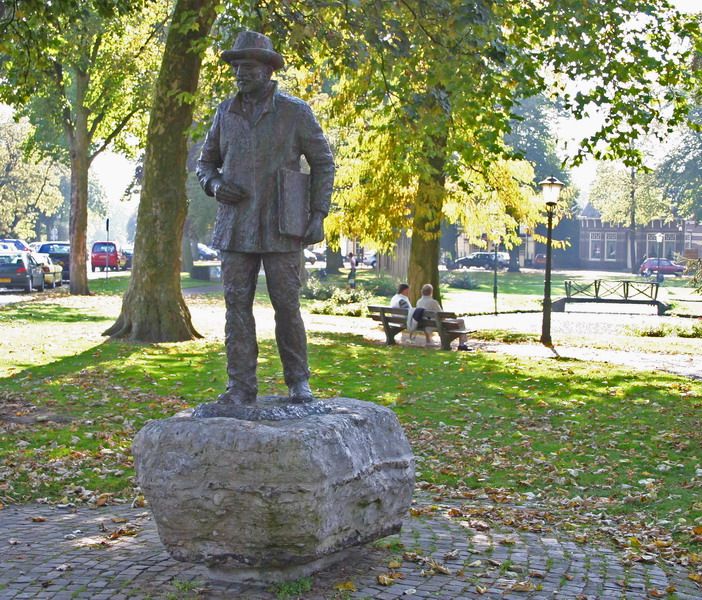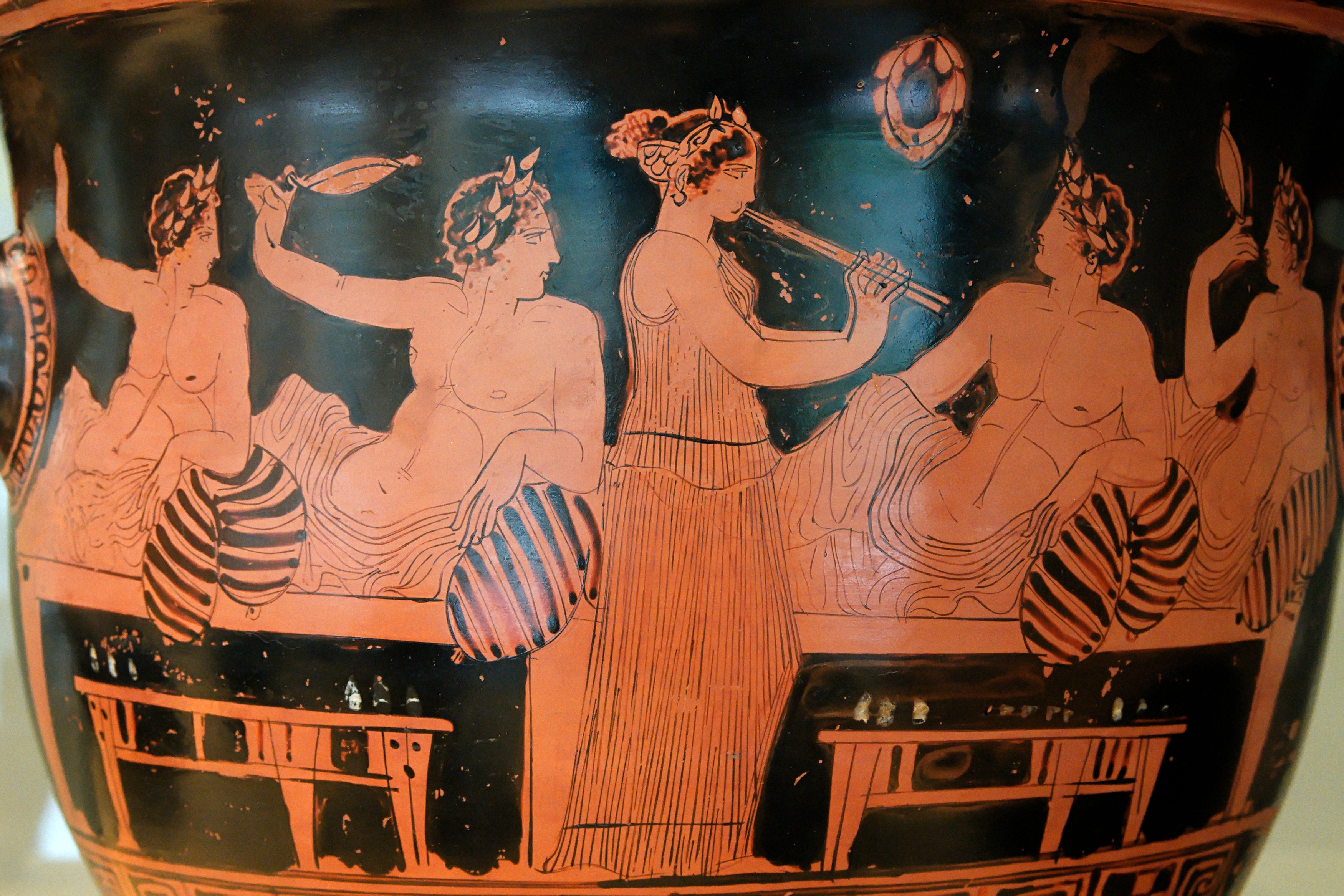|
Woensel
Woensel is a former town in the Dutch province of North Brabant, but nowadays a borough of Eindhoven. An important rural village in North Brabant, Woensel is mentioned in a document from 1107; it was the seat of a deanage of the diocese of Liège. According to the German mythologist Jacob Grimm the name Woensel is a reference to the Germanic god Wodan (Odin in Norse mythology). The suffix would have been an abbreviation of either ''-sala'' ("hall") or ''-loo'' ("forest"). Around 1200, Eindhoven, a fortification on the Dommel river to the south of Woensel, grew into a local market town that took more political prominence, but never surpassed Woensel in prosperity or population. Woensel was a separate municipality until the fusion, in 1920, of Eindhoven proper (i.e. within the town walls) and its surrounding villages into a single municipality. Today, Woensel is Eindhoven's largest district, with about 110,000 inhabitants; it is mostly covered by urban neighbourhoods erected bet ... [...More Info...] [...Related Items...] OR: [Wikipedia] [Google] [Baidu] |
Eindhoven
Eindhoven ( ; ) is a city and List of municipalities of the Netherlands, municipality of the Netherlands, located in the southern Provinces of the Netherlands, province of North Brabant, of which it is the largest municipality, and is also located in the Dutch part of the natural region the Campine. With a population of 246,443 (1 January 2024) on a territory of 88.92 km2,Statistieken gemeente Eindhoven AlleCijfers.nl it is the List of cities in the Netherlands by province, fifth-largest city of the Netherlands and the largest outside the Randstad conurbation. Eindhoven was originally located at the confluence of the Dommel and the Gender (stream), Gender. A municipality since the 13th century, Eindhoven witnessed rapid growth starting in the 1900s by textile and tobacco industries. Two well-known companies, DA ... [...More Info...] [...Related Items...] OR: [Wikipedia] [Google] [Baidu] |
Netherlands
, Terminology of the Low Countries, informally Holland, is a country in Northwestern Europe, with Caribbean Netherlands, overseas territories in the Caribbean. It is the largest of the four constituent countries of the Kingdom of the Netherlands. The Netherlands consists of Provinces of the Netherlands, twelve provinces; it borders Germany to the east and Belgium to the south, with a North Sea coastline to the north and west. It shares Maritime boundary, maritime borders with the United Kingdom, Germany, and Belgium. The official language is Dutch language, Dutch, with West Frisian language, West Frisian as a secondary official language in the province of Friesland. Dutch, English_language, English, and Papiamento are official in the Caribbean Netherlands, Caribbean territories. The people who are from the Netherlands is often referred to as Dutch people, Dutch Ethnicity, Ethnicity group, not to be confused by the language. ''Netherlands'' literally means "lower countries" i ... [...More Info...] [...Related Items...] OR: [Wikipedia] [Google] [Baidu] |
North Brabant
North Brabant ( ; ), also unofficially called Brabant, Dutch Brabant or Hollandic Brabant, is a province in the south of the Netherlands. It borders the provinces of South Holland and Gelderland to the north, Limburg to the east, Zeeland to the west, and the Flemish provinces of Antwerp and Limburg to the south. The northern border follows the Meuse westward to its mouth in the Hollands Diep strait, part of the Rhine–Meuse–Scheldt delta. North Brabant had a population of about 2,626,000 as of January 2023. Major cities in North Brabant are Eindhoven (pop. 231,642), Tilburg (pop. 217,259), Breda (pop. 183,873), its provincial capital 's-Hertogenbosch (pop. 154,205), and Helmond (pop. 94,967) History The Duchy of Brabant was a state of the Holy Roman Empire established in 1183 or 1190. It developed from the Landgraviate of Brabant and formed the heart of the historic Low Countries, part of the Burgundian Netherlands from 1430 and of the Habsburg Netherlands f ... [...More Info...] [...Related Items...] OR: [Wikipedia] [Google] [Baidu] |
Diocese Of Liège
In church governance, a diocese or bishopric is the ecclesiastical district under the jurisdiction of a bishop. History In the later organization of the Roman Empire, the increasingly subdivided provinces were administratively associated in a larger unit, the diocese (Latin ''dioecesis'', from the Greek term διοίκησις, meaning "administration"). Christianity was given legal status in 313 with the Edict of Milan. Churches began to organize themselves into dioceses based on the civil dioceses, not on the larger regional imperial districts. These dioceses were often smaller than the provinces. Christianity was declared the Empire's official religion by Theodosius I in 380. Constantine I in 318 gave litigants the right to have court cases transferred from the civil courts to the bishops. This situation must have hardly survived Julian, 361–363. Episcopal courts are not heard of again in the East until 398 and in the West in 408. The quality of these courts was ... [...More Info...] [...Related Items...] OR: [Wikipedia] [Google] [Baidu] |
Jacob Grimm
Jacob Ludwig Karl Grimm (4 January 1785 – 20 September 1863), also known as Ludwig Karl, was a German author, linguist, philologist, jurist, and folklorist. He formulated Grimm's law of linguistics, and was the co-author of the ''Deutsches Wörterbuch'', the author of ''Deutsche Mythologie'', and the editor of ''Grimms' Fairy Tales''. He was the older brother of Wilhelm Grimm; together, they were the literary duo known as the Brothers Grimm. Life and books Jacob Grimm was born 4 January 1785, in Hanau in Landgraviate of Hesse-Kassel, Hesse-Kassel. His father, Philipp Grimm, was a lawyer who died while Jacob was a child, and his mother Dorothea Grimm, Dorothea was left with a very small income. Her sister was the lady of the chamber to the Landgravine of Hesse, and she helped to support and educate the family. Jacob was sent to the public school at Kassel in 1798 with his younger brother Wilhelm Grimm, Wilhelm. In 1802, he went to the University of Marburg, where he stud ... [...More Info...] [...Related Items...] OR: [Wikipedia] [Google] [Baidu] |
Wodan
Odin (; from ) is a widely revered god in Norse mythology and Germanic paganism. Most surviving information on Odin comes from Norse mythology, but he figures prominently in the recorded history of Northern Europe. This includes the Roman Empire's partial occupation of Germania ( BCE), the Migration Period (4th–6th centuries CE) and the Viking Age (8th–11th centuries CE). Consequently, Odin has hundreds of names and titles. Several of these stem from the reconstructed Proto-Germanic theonym ''Wōðanaz'', meaning "lord of frenzy" or "leader of the possessed", which may relate to the god's strong association with poetry. Most mythological stories about Odin survive from the 13th-century ''Prose Edda'' and an earlier collection of Old Norse poems, the ''Poetic Edda'', along with other Old Norse items like ''Ynglinga saga''. The ''Prose Edda'' and other sources depict Odin as the head of the pantheon, sometimes called the Æsir, and bearing a spear and a ring. Wider ... [...More Info...] [...Related Items...] OR: [Wikipedia] [Google] [Baidu] |
Dommel
The Dommel is a small river in Belgium and the Netherlands, left tributary of the Dieze. It is 120 km long, of which 85 km are in the Netherlands. The Dommel takes in water from the Keersop, Tongelreep, Run (stream), Run, Gender (stream), Gender and Kleine Dommel streams and merges at 's-Hertogenbosch with the Aa (Meuse), Aa stream to form the river Dieze, which subsequently flows towards the Meuse. The main cities and towns along the Dommel's course are Peer, Neerpelt, Valkenswaard, Dommelen, Eindhoven, Son en Breugel, Sint-Oedenrode, Boxtel, Sint-Michielsgestel and 's-Hertogenbosch. Drainage basin The drainage basin of the Dommel belongs to that of the Meuse. To the west of is the basin of the Donge (river), Donge, which also belongs to that of the Meuse. To the south the basin of the Dommel borders that of the Schelde. To the east is that of the Aa. Further to the south a number of rivers flow into the Meuse much further upstream. History Former glory The Dommel often lo ... [...More Info...] [...Related Items...] OR: [Wikipedia] [Google] [Baidu] |
Stadsdeel
A stadsdeel (; ; ) is the name used for urban or municipality districts in some of the larger municipalities of the Netherlands. Amsterdam calls 7 of its 8 '' deelgemeenten'' ''stadsdeel''. They form a level of government, both executive (''stadsdeelwethouders'') and legislative (''Stadsdeelraad'', a council elected by the inhabitants), and can therefore be regarded as boroughs or '' wards''. Until 2010, Amsterdam had 15 deelgemeenten, but the number has been decreased to eight. Eindhoven Eindhoven ( ; ) is a city and List of municipalities of the Netherlands, municipality of the Netherlands, located in the southern Provinces of the Netherlands, province of North Brabant, of which it is the largest municipality, and is also locat ...'s ''stadsdelen'' correspond to the former municipalities that fused into that of Eindhoven in 1920; their use to subdivide Eindhoven is standard on traffic signs and in official documents and publications, but they have no political or administra ... [...More Info...] [...Related Items...] OR: [Wikipedia] [Google] [Baidu] |
Entertainment
Entertainment is a form of activity that holds the attention and Interest (emotion), interest of an audience or gives pleasure and delight. It can be an idea or a task, but it is more likely to be one of the activities or events that have developed over thousands of years specifically for the purpose of keeping an audience's attention. Although people's attention is held by different things because individuals have different preferences, most forms of entertainment are recognisable and familiar. Storytelling, music, drama, dance, and different kinds of performance exist in all cultures, were supported in Court (royal), royal courts, and developed into sophisticated forms over time, becoming available to all citizens. The process has been accelerated in modern times by an entertainment industry that records and sells entertainment products. Entertainment evolves and can be adapted to suit any scale, ranging from an individual who chooses private entertainment from a now enormous ... [...More Info...] [...Related Items...] OR: [Wikipedia] [Google] [Baidu] |
Venue
*
*
{{Disambigu ...
A venue is the location at which an event takes place. It may refer to: Locations * Venue (law), the place a case is heard * Financial trading venue, a place or system where financial transactions can occur * Music venue, place used for a concert or musical performance * Sport venue, place used for a sporting event * Theater (structure), or venue, a place used for performing theater Other uses * ''Venue'' (magazine), the "what's on" magazine for the Bristol and Bath areas of the UK * Venue (sound system), a brand of live sound mixing consoles * Dell Venue, an Android smartphone manufactured by Dell * Hyundai Venue, a car model manufactured by Hyundai Motor Company See also * The Venue (other) The Venue may refer to: * The Venue (Leeds), a concert space at Leeds Conservatoire, West Yorkshire, England * The Venue (Leicester Square, London), now the Leicester Square Theatre * The Venue (Victoria Street, London), a 1978–1984 music venue a ... [...More Info...] [...Related Items...] OR: [Wikipedia] [Google] [Baidu] |
Philips
Koninklijke Philips N.V. (), simply branded Philips, is a Dutch multinational health technology company that was founded in Eindhoven in 1891. Since 1997, its world headquarters have been situated in Amsterdam, though the Benelux headquarters is still in Eindhoven. The company gained its royal honorary title in 1998. Philips was founded by Gerard Philips and his father Frederik, with their first products being light bulbs. Through the 20th century, it grew into one of the world's largest electronics conglomerates, with global market dominance in products ranging from kitchen appliances and electric shavers to light bulbs, televisions, cassettes, and compact discs (both of which were invented by Philips). At one point, it played a dominant role in the entertainment industry (through PolyGram). However, intense competition from primarily East Asian competitors throughout the 1990s and 2000s led to a period of downsizing, including the divestment of its lighting and c ... [...More Info...] [...Related Items...] OR: [Wikipedia] [Google] [Baidu] |




